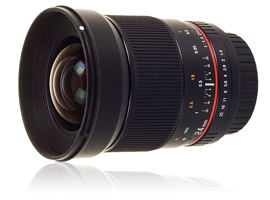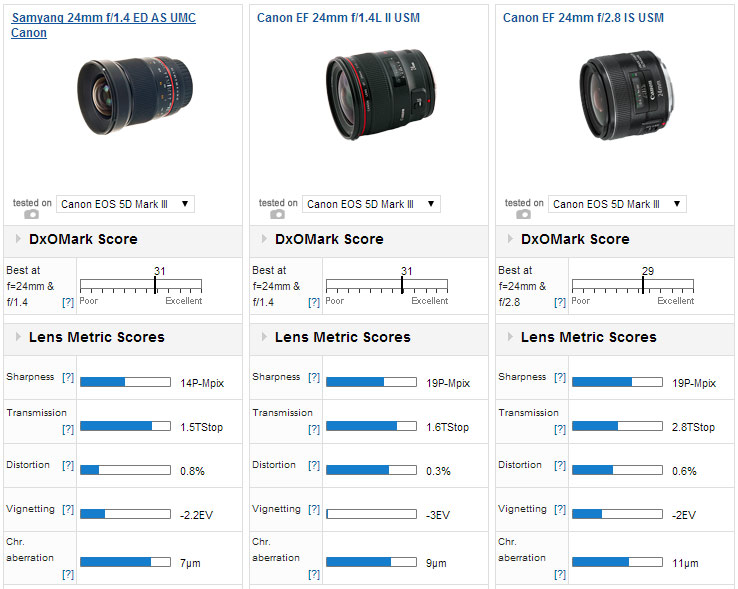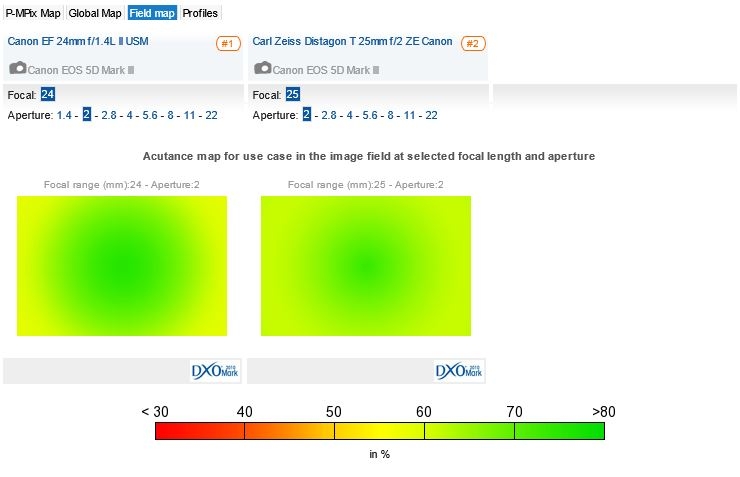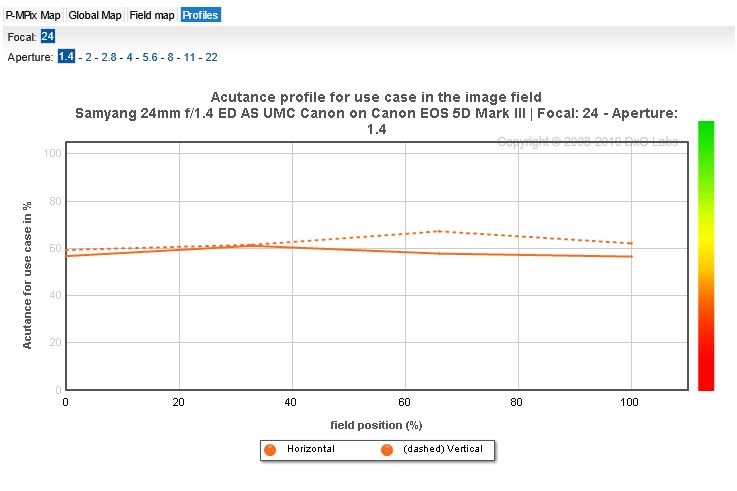Introduction
24mm: Typical use
Although the popularity of mirrorless cameras has flourished in Asia, the DSLR continues to be the camera design of choice with professionals and enthusiasts worldwide. Regardless of that, the highly refined design the cameras are only a part. By far the more important segment of the system to these users is the lens line up.
With its expansive field of view, close focus capability and range of different speed models, the 24mm focal length is one of the most popular focal lengths, and has long since replaced the once common 28mm as the wide-angle of choice. Being only fractionally wider, it’s a simple case to frame and later crop to the 28mm field of view.
With high-resolution cameras this option has become routine, but there’s little doubt the resurgence in demand for the 24mm and can be attributed to the popularity and now accessibility of full-frame DSLRs. That’s not only because the sensor restored the intended field of view and image aesthetic but also because of the emergence of video capture.
The introduction coincided with a craze for shallow depth of field, but traditionally the ultra-fast models were designed exclusively for reportage and available light photography. Canon was the first to introduce a 24mm f1.4, back in 1975, an achievement that has only recently been matched by rivals.
Models with more modest f2.8 maximum apertures were intended for architecture, interiors and landscapes. While that’s still true today, makers such as Canon are optimizing optical designs for highly detailed and descriptive imaging, and adding value with features such as stabilization. That particular option isn’t solely a benefit for the stills photographer; it’s now not uncommon to see handheld footage from DSLRs and the latest optical stabilization technology is very effective at minimizing the highly distracting movement.
Best performing 24mm for the Canon EOS 5D Mark III
 |
 |
 |
 |
| Canon EF 24mm f/1.4L II USM | 1550 | 31 | 19 |
| Samyang 24mm f/1.4 ED AS UMC Canon | 600 | 31 | 14 |
| Canon EF 24mm f/2.8 IS USM | 800 | 29 | 19 |
| Carl Zeiss Distagon T 25mm f/2 ZE Canon | 1700 | 27 | 17 |
| Canon EF 24mm f/2.8 | 356 | 24 | 17 |
Top 3 performing 24mm lenses:
Samyang 24mm f/1.4 ED AS UMC Canon vs Canon EF 24mm f/1.4L II USM vs Canon EF 24mm f/2.8 IS USM
The ultra-high speed Canon EF 24mm f1.4L II USM lens has an outstanding reputation, and it comes as little real surprise to see it as the best performing lens of its type on the Canon EOS 5D Mark III.
Revised six years ago now, this mark II model features 13 elements in 10 groups, including two molded aspherical elements and, unusually, two UD (low dispersion) glass elements to minimize CA. It was one of the first models to use the firm’s Sub-Wavelength structure Coating (SWC) in addition to the usual Super Spectra Coating (SSC) and also has a ‘floating’ mechanism to improve image quality at close range – it focuses to just 9.9’ (0.25m).
It’s a beautifully made lens with very good sharpness wide-open though inevitably the outer field is softer till f2.8 where it’s not far behind. Optimum performance is achieved between f4-5.6. It has some slight barrel bordering on complex distortion and heavy vignetting, but it’s no different in that respect to rivals. Suppression of chromatic aberration in a high-speed lens like this is a major concern for makers, and this model has slightly more in the outer field than you might expect.
In joint first place is the Samyang with a 31-point DxOMark score but the lower peak sharpness places firmly it in second place overall. It has unusually low chromatic aberration at the initial aperture – there’s some noticeable in the corners but it’s slight. However, wide-open sharpness is lower than we hoped for – we’ll have more to say later.
In third place is Canon’s totally revised EF 24mm f2.8 IS USM. Not only does the new model feature 4-stop image stabilization (with the firm’s auto panning detection), making it suitable for video capture amongst other disciplines, it has a revised optical formula including a molded asphere and a minimum focusing distance of 7.87’ (0.2m).
At around $800 the revised model is not inexpensive but it’s a well-rounded lens in performance and features. It can match the EF 24mm f1.4L II USM for peak sharpness and performs similarly at every comparable aperture. That means wide-open, at f2.8, it has high sharpness across the image field.
In fourth place is the manual focus Zeiss Distagon T* 25mm f2.0 ZE. This model with its all-metal construction including a brass helicoid is a heavy if exceptionally well-made lens. Although it has an advanced optical construction of 11 elements in 10 groups, including four anomalous partial dispersion glass elements and one aspherical element, image quality still can’t quite match the others, although it has superior sharpness compared to the Samyang.
Full aperture performance is impressive. Although it has heavier vignetting, it has lower CA and better peripheral sharpness than the Canon at f2.0. Somewhat surprisingly, one stop down at f2.8 the outer field lags behind and doesn’t recover till f5.6 where it has excellent uniformity from there upwards.
Samyang 24mm f/1.4 ED AS UMC Canon
Unlike ultra-high-speed models from the premium marques, the ultra-high speed Samyang 24mm f1.4 ED AS UMC is only $600/669. But, before you rush out to pick one up, the Samyang has no auto-focus and this Canon mount version lacks electronic data-bus contacts (unlike the manual focus Zeiss ZE model).
As a result the Samyang lacks automatic aperture control, requiring stopped down metering only. Although metering remains automatic with Canon cameras, both program and shutter-priority exposures modes aren’t available.
Besides that obvious shortcoming, the optical construction is impressive. In total it has 13 elements in 12 groups, four of which are ED glass elements to minimize chromatic aberration, while two aspheres are incorporated to reduce spherical aberration. With a 77mm filter thread and measuring 3.27 x 3.74″ (83 x 95 mm) this is a big and heavy lens at over half a Kilo (580g) or 20.46 oz.
While the Samyang achieves a very high DxOMark score of 31 points, indicating that it’s a well corrected lens, the overall sharpness is a little on the low side for this type of model.
It’s particularly noticeable at full aperture where acutance was measured to be just below 60% in the center of the image field. Performance improves significantly at f2 and is very good by f2.8 but the low sharpness wide-open in the center is somewhat discouraging in a high-speed lens.
Vignetting is quite heavy as well with it reaching -2.3Ev in the extreme corners and bear in mind that no in-camera correction is available. Still it’s simple to remove in post. Low chromatic aberration is impressive in a lens like this and distortion is low as well, but it’s bordering on complex ‘moustache’ type that isn’t easy to correct manually.
Conclusion
Although the Samyang is a phenomenal performer, its sharpness wide open doesn’t match that of rival high-speed designs. Given the modest pricing it will no doubt continue to be a popular model but it would be all the more attractive with the addition of automatic aperture control and perhaps AF-assist (though it’s often unreliable without experience). There’s another, often overlooked benefit from the inclusion of data transmission – EXIF data stored in Raw files could be used by third-party software suppliers to apply lens corrections. Future updates such as these would seem likely but for now the Canon mount version is overshadowed by the better performing rivals.














DXOMARK encourages its readers to share comments on the articles. To read or post comments, Disqus cookies are required. Change your Cookies Preferences and read more about our Comment Policy.